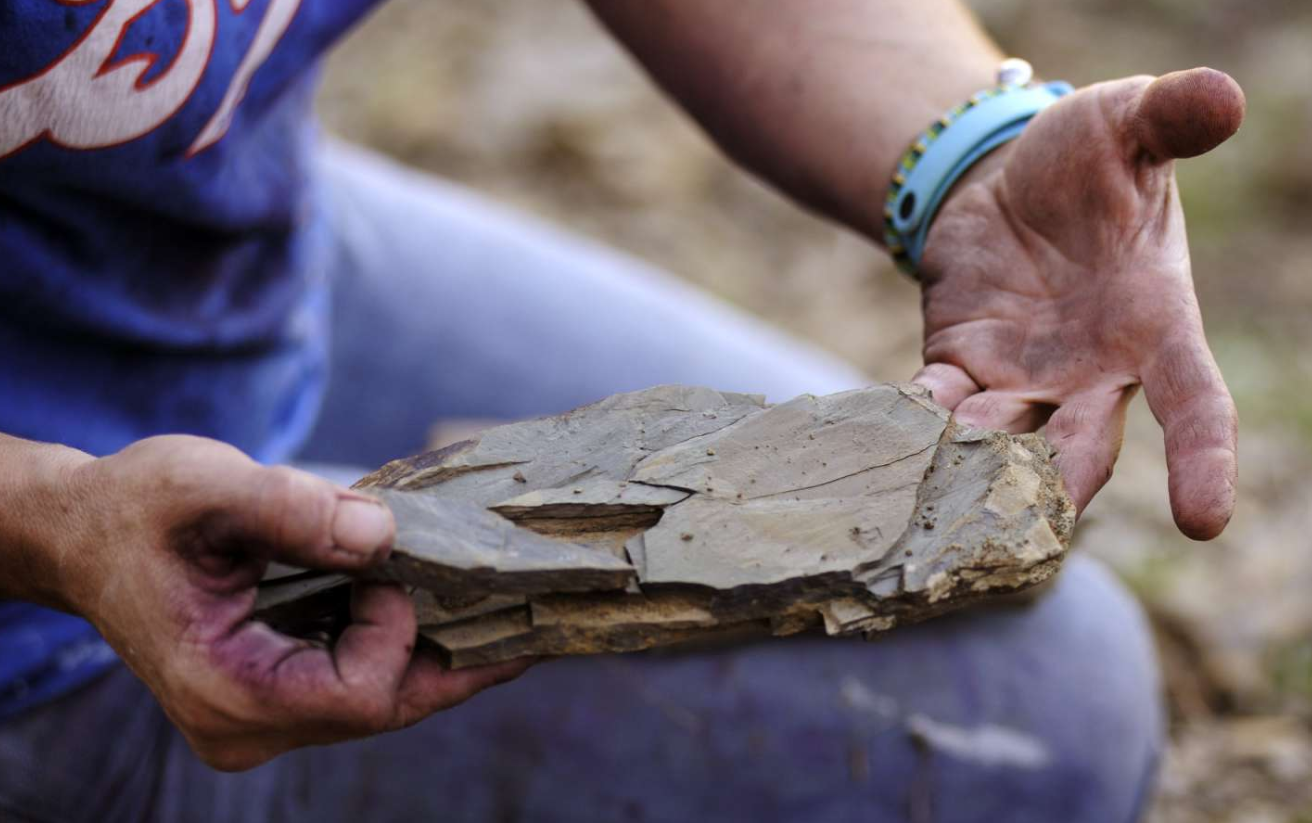CASE CLUB SELECTIONS – November, 2023
- Llicorella Vins, Bluegray DOQ Priorat $20 (ES)
- Delta Pinot Noir, $17 (CA)
- Bondar Junto, GSM Blend, $22 (AU)
- Capolino Perlingieri Sanno Greco, $16 (IT)
- Zebedeo Blanco (Albariño/Godello), $15 (ES)
- Château de Fontarèches ‘La Chapelle Mignard’ Corbieres Blanc, $20 (FR)
- Ziereisen Weisser Burgunder (Pinot Blanc), $23 (DE)
- North Valley Willamette Pinot Noir, $31 (OR)
- Chateau de la Bottiere 2020 Beaujolais Julienas, V. Vignes, $34 (FR)
- Vignerons de Mancey Bourgogne Blanc, $23 (FR)
- Fouet Buvon des Fruits, Loire Valley$26 (FR)
- Francesco Brigatti Vespolina “Maria” Alto Piemonte, $26 (IT)
1. Llicorella Vins, Bluegray DOQ Priorat, Spain, $20
The Wine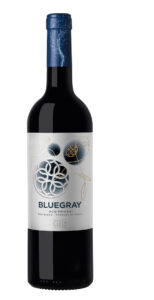
As is common in the reds of Priorat, this is a heavyweight, tipping the scales at 15% alcohol. It’s a blend of Garnacha (grenache), Cariñena (Carignane), Syrah and Merlot (40/30/20/10). The wine is inky black in the glass, with notes of smoke, beef jerky, cherry, dark chocolate, licorice and violet along with tell-tale signs of cracked pepper.
The DOQ Priorat Region
This Priorat (PRE oh rat) DOQ is a small, steep appellation located in Cataluña – the Northeastern portion of Spain. From the capital city of Barcelona it’s an easy day trip south along the Mediterranean coast (unless you rent an electric Renault, but that’s a tale for another time over several glasses of wine!). Priorat literally forms the tip of Montsant mountain and is surrounded like a donut by the Montsant DOP. The surrounding mountain range protects Priorat from the strong, drying winds (Cierzo) that are so strong they can be destructive to even the most established vine.
 Aside from the Cierzo, Priorat is also known for its schist soils. The locals have created a word for them – “Llicorella” (this is a tough one! Say eel kor RAIL yah) – a quartz-rich blue slate that fragments easily (leading to the local saying “Schist happens”. When visiting a Priorat vineyard for the first time, a common thought that runs through your head is “how can ANYTHING grow in soils that are really just layers and layers of rock?!” (see image at right)
Aside from the Cierzo, Priorat is also known for its schist soils. The locals have created a word for them – “Llicorella” (this is a tough one! Say eel kor RAIL yah) – a quartz-rich blue slate that fragments easily (leading to the local saying “Schist happens”. When visiting a Priorat vineyard for the first time, a common thought that runs through your head is “how can ANYTHING grow in soils that are really just layers and layers of rock?!” (see image at right)
The truth is – the grape roots really struggle. But it’s one of the many miracles of wine that the vine is more stubborn and persistent than most plants in its quest for water and nutrients. But when grape vines grow in soils low in nutrients and water, its fruit yield is very low and the grapes themselves are smaller and their juice more concentrated. The resulting wine is rich in fruit, minerality, and elegance.
Priorat is known for red blends made primarily of Garnacha and Cariñena, often blended with smaller percentages of Cabernet Sauvignon, Syrah, and/or Merlot. The red wines of Priorat are age-worthy, there is no need to do so here – open and enjoy!
2. Wines for Change, “Delta” Pinot Noir, CA, $17
The Winery
 Matt Laconis attended UC Davis to play football and study aeronautical engineering. But one elective winemaking class and he was hooked 0 it didn’t take a rocket scientist to see he would soon change his career trajectory. After graduating he travelled the world to study under world-class winemakers (Australia, New Zealand, Italy, France…) In 2011 he founded Brick & Mortar winery in Sonoma with his wife, Alexis. She came from the restaurant/hospitality industry, attending the Culinary Institute of America in Hyde Park NY. Working as an intern in Napa, she too was bitten by the wine bug, and changed HER career direction, eventually passing the Advanced Sommelier test from the Court of Master Sommeliers. The two were married in 2014 and now live and make wine in Sonoma County, California with their three children.
Matt Laconis attended UC Davis to play football and study aeronautical engineering. But one elective winemaking class and he was hooked 0 it didn’t take a rocket scientist to see he would soon change his career trajectory. After graduating he travelled the world to study under world-class winemakers (Australia, New Zealand, Italy, France…) In 2011 he founded Brick & Mortar winery in Sonoma with his wife, Alexis. She came from the restaurant/hospitality industry, attending the Culinary Institute of America in Hyde Park NY. Working as an intern in Napa, she too was bitten by the wine bug, and changed HER career direction, eventually passing the Advanced Sommelier test from the Court of Master Sommeliers. The two were married in 2014 and now live and make wine in Sonoma County, California with their three children.
It goes without saying that few industries are as dependent on the environment as agriculture. And as wine is one of the few ag products to successfully defy commoditization, wine growers feel an ever-increasing urgency to protect future harvests.
Delta, meaning change, was born out of a desire to create wines that help make a difference in the fight to protect our planet. Wines for Change partners with organizations committed to making a positive impact on the environment such as cleaning up our oceans and reducing CO2 emissions. The winery goes beyond offsetting their own carbon footprint by donating a portion of sales to the Surfrider Foundation and Cool Effects. In the first three years since the launch of this initiative, Wines for Change has donated $75k to these worthy causes. 
The Wine
The grapes for this wine are from cool-climate, coastal vineyards found from California’s Mendocino to the Central Coast. The grapes were fermented using native yeasts found on the grape skins and in the environment at the winery. A mix of new and used barrels were used, adding seasoning to the wine’s red cherry/cranberry fruit notes, amplifying its cedar, lavender and rose petal.
Only 2,500 cases produced.
ABV 14.1% A share of proceeds from this wine go to the Surfrider foundation.
3. Bondar “Junto” GSM Blend, Australia, $22
The Wine
 “Junto” is a Spanish term for ‘Together’, which describes this husband-wife effort as well as the many grapes that contribute to this wine:
“Junto” is a Spanish term for ‘Together’, which describes this husband-wife effort as well as the many grapes that contribute to this wine:
- Grenache (62%)
- Shiraz, aka Syrah (21%)
- Mataro, aka, Mourvedre (15%)
- Cinsault (2%)
As with many of Australia’s great Reds, this wine is inspired by the wines of the Southern Rhone – blends of multiple red grapes. The Grenache its pretty red fruits and perfume to the party, while the Shiraz and Mataro lend spice, depth and structure.
Bondar’s fruit is all hand-picked and handled gently in the winery, with élevage taking place in old oak.
This wine is unpretentious and easy to drink – a perfect bistro wine and not a bad house wine to enjoy on a regular weeknight!
The Winemakers
 Bondar is a small family company making wines from Australia’s McLaren vale and Adelaide Hills. Their house style is a wine that’s lighter, brighter, more savory, structured and beguiling. Such wines are notably different from the Australian archetype. Since launching the winery, they’ve been named James Halliday’s ‘Best New Winery’ in his 2017 Australian Wine Companion, and have gone on to be named one of the “Top 50 Young Guns of Wine” in both 2018 and 2021.
Bondar is a small family company making wines from Australia’s McLaren vale and Adelaide Hills. Their house style is a wine that’s lighter, brighter, more savory, structured and beguiling. Such wines are notably different from the Australian archetype. Since launching the winery, they’ve been named James Halliday’s ‘Best New Winery’ in his 2017 Australian Wine Companion, and have gone on to be named one of the “Top 50 Young Guns of Wine” in both 2018 and 2021.
The story behind the name is simple – it’s Andre and Selina’s surname, Bondar. While it may seem a no-briner to append your family name to your wines, for Andre and Selina this was a well-considered decisoin. They feel it is a testament to the integrity behind the wines they make:
“To use your surname means your wines must stack up” says Andre. “We would never put our name on a bottle unless we believe in it 100%“
Fun side note – the name Bondar has a strong connection with winemaking as it is the Polish and Ukrainian name for Cooper (barrel-maker). The logo references this connection with its barrel-shaped curve. The pine tree is taken from the flag of the town in Poland where Andre’s grandfather lived before fleeing to Australia as a WWII refugee.
4. Capolino Perlingieri ‘Vento’ Greco Sannio, Italy $16
 The Wine
The Wine
Though Perlinerieri observes organic practices, they also deviate from them to move towards a more sustainable standard. They eschew the use of organic chemicals they have found to be damaging to the vineyard. And they also believe that those in pursuit of “Natural” wines have forgotten that the MOST natural state for fermented grape juice is vinegar, and they take steps in the cellar to avoid such an end state!
The Grechetto grape is difficult to work with. Thin skinned and prone to oxidation, it changes drastically after bottling and on through its ~5 year lifespan. Early characteristics suggest notes of wax, citrus, and yellow orchard fruits. Over time a pleasant waxiness develops, and the fruit profile moves toward ripe Golden Delicious. Drink now through 2024/5.
100% Grechetto. 13% ABV
The Winery
 In 2003, when Alexia Capolino Perlingieri was thirty, she left behind her beloved Milan and an investment banking career to take up the family role of winegrower – a love of the land that had passed on to her from two prior generations. But Alexia took things to a whole new level. Her Grandfather and mother considered winegrowing to be little more than a hobby. But the world had changed since their days as dabbler winemakers, and her ambition far exceeded their winemaking achievements, so Alexia started from scratch.
In 2003, when Alexia Capolino Perlingieri was thirty, she left behind her beloved Milan and an investment banking career to take up the family role of winegrower – a love of the land that had passed on to her from two prior generations. But Alexia took things to a whole new level. Her Grandfather and mother considered winegrowing to be little more than a hobby. But the world had changed since their days as dabbler winemakers, and her ambition far exceeded their winemaking achievements, so Alexia started from scratch.
She bought new land, replanted obsolete vineyards, built a modern cellar, hired an oenologist and worked side-by-side with her workers to understand the dynamics and complexities of her property. In other words, Alexia is no Prima Dona!
Her family’s farm in the Sannio area is now home to 30 acres of vineyards and a 12 acres of olive trees. They guide their farming using organic practices whenever possible. Alexia chose to plant her vineyards with Campania’s heritage grape varieties instead of the “International varieties – Cabernet, Merlot, Syrah…”. Though wines made from these native grapes can be more difficult to sell to a market unfamiliar with them, Alexia believes her vineyard’s wealth lies in its uniqueness. This truth seems especially so in a global economy where commoditization reigns. Regression to the mean is not always a good thing.
The Region
Sannio is a sub-zone within Campania almost unknown to most people because it’s off the well-worn tourist path. Though it’s only 45 miles from Naples, Sannio is quite different from stereotypical Campania: there are vineyards and olive groves extending as far as the eye can see. Standing at the base of the Apennine’s that run North-to-South for most of the Italian peninsula, the Sannio region borders Campania, Apulia and Molise.
For centuries, the wines of the Sannio region were popular in Rome. But they were transported through the Pompeii market until the fatal eruption of Vesuvius put an end to that route in AD 79. That day ended its worldwide trading business along with so many other heart-breaking losses.
Today, almost 2000 years later, Sannio produces 315,000 gallons of wine. That’s the equivalent of about 120,000 cases, making up 45% of Campania’s overall production.
5. Zebedeo Blanco (Albariño/Godello) Rias Baixas, Spain, $14.50
The Wine
This is a delightfully refreshing blend of Albariño and… Godello(go-DEY-yo), a rare white grape that we feel deserves more attention than it gets. But it’s hard when you play second fiddle behind the great Albariño.
That aside, we think this wine delivers more goods/$ than most of the white wines we’ve sampled this year. The Albariño brings crisp freshness while the richer notes of Godello create a unique and beautiful wine.
Nectarine, pear, apple, citrus zest, a flutter of raw honey/beeswax and a lot of wine for the money!
The Winery
This wine comes from Rías Baixas (REE us BAY jhas) wine area within the larger region of Galicia (ga LEE thee ah*). Rias Baixas is a subregion defined by four estuaries. Wines from this region have fairly well exploded over the past decade as people seek crisp and refreshing wines with lower alcohol. The white wines of Rías Baixas fit this bill to a tee! Made exclusively or primarily from Albariño, the workhorse grape of the region.
Galicia is Spain’s most northwestern wine region, located just north of Portugal. If you were to order a white wine at a sidewalk cafe in Portugal, you’d likely to be served a glass of Albariño, though the grape changes its name slightly – once it goes over the border into Portugal it’s known as Alvarinho!
*Fun Trivia – It’s said the unique Catalan and Galician use of a lisp-like pronunciation stems from centuries ago when their king spoke with a lisp. I don’t know if this is true, but it’s a good story, and helps us remember how to properly pronounce words like Galicia, Barcelona and more!
6. Château de Fontarèches ‘La Chapelle Mignard’ Corbieres Blanc, France, $20
The Wine
A deliciously quaffable white blend (Roussanne and Grenache Blanc, 60/40). The wine has a pale white/golden color. Its nose combines white-fleshed fruit and fresh spices. Very light toasted notes are perceptible and reveal the fermentation in barrels of the Rolle (Vermentino). The palate is full-bodied and well integrated but with a freshness that makes this wine a quaffable companion during happy hour. The finish lingers, featuring notes of white fruit and a citrusy crispness. Alcohol: 13.0% vol.
The Winery
One of the fun things about studying and drinking wines from the Old World is the history they bring. For example, the history of this Château goes something like this:
- (date not recorded) Original tower was built
- AD 984 – the property is first entered into recorded history as the Archbishop granted “the small holding known as Fontareche with the small tower that is there, except for the church and ecclesiastical elements“
- AD 1201 – the moat is commissioned
- Late 1600s – granted status as a “specific seigneury”, it became the property of nobles. Ownership passes to famed painter Pierre Mignard, portraitist for the court of King Louis XIV (pre-revolution, clearly, as there wasn’t much demand for portraits of headless kings). This wine is named for him.
The region – Corbieres is the dominant sub-zone within the larger Languedoc-Roussillon of Southern France. Corbieres provides a whopping 46% of the wine from Languedoc-Roussillon , but only 2% of that production is a white wine like this one.
Which is a shame! This wine is delicious. And a great value to boot!
7. Ziereisen Weisser Burgunder (Pinot Blanc), Germany $23
The Wine
Weisser Burgunder is the German term for Pinot Blanc or White grape of Burgandy (‘Weisser’ = white or blanc, while ‘Burgunder’ = Burgundy, the spiritual center for Pinot). In addition to this wine, Ziereisen produces a Grauer Burgunder (Pinot Gris) and a Spätburgunder (Pinot Noir – the term translates as the Late Burgunder, or the last of the triumvirate to ripen).
This wine is imported by my old friend, Hiram Simon, who not only imports killer wines but also has a knack for describing them. I quite enjoyed his description of Ziereisen (zeer dhie sen) and this wine, so I share it verbatim:
“There is a wonderfully relaxed quality to this wine, curiously evocative of the style familiar from the great Nikolaihof estate in the Wachau. The attack is salty, the texture silky and the flavors just delicious. And yes, 2018 is the “new” vintage. Hanspeter doesn’t believe in rushing wines to market.”
The Winery
“Ziereisen is in the southernmost part of Baden. The soils here are predominantly limestone, which is immediately suggestive of a kinship with Burgundy, especially as there are remarkable climatic similarities between the two regions.

Hanspeter Ziereisen is a huge personality whom everyone seems to know. He and his endlessly good-humored wife, Edeltraud, preside over a compact domaine with an influence out of proportion to its size.
He makes the family’s wines in a resolutely individual way, having long ago given up the notion of conforming to the narrow mind-set of the local wine authorities. Consequently, most of his wines are not submitted for approval as ‘AO Baden’ wines. He would rather they be sold with the lowly designation of “regional” wines, than forfeit his standards. Note, however, the most expensive of Ziereisen’s wines are amongst the dearest wines of Germany. Call this the “Sassicaia Syndrome”.
Without subscribing to the strictest dogmas of “Natural” wine, Ziereisen’s products can be described as nothing but. All vineyard work is manual, all oak barrels are local, no chemicals are employed in the vineyards, fermentations are spontaneous, no wines are filtered, and everything is given time to relax on the lees before bottling and in the bottle before release – even if this runs counter to the cycles of the commercial clock. Each product is given a fanciful name in the local dialect, which is strongly influenced by the strange sonorities spoken across the border in Switzerland. Welcome to the wacky world of Ziereisen. Slides down the throat as easily a hot knife slices through butter.”
8. North Valley Vineyards Pinot Noir ‘Willamette Valley’, Oregon $31
The Wine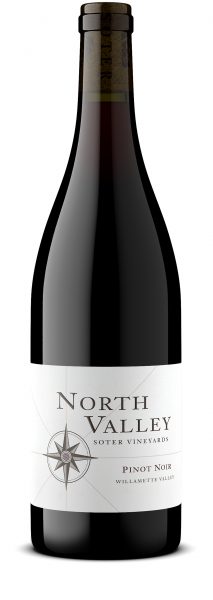
The wine begins with classic Oregon Pinot aromas of rose petals, black cherry, plum, and toasted cedar, leading into a palate of wild blueberry and Bing cherry followed by mint and an orange zest that finishes taut and supple.
• Fermented in small open-top vessels
• 20% whole-clusters fermentation
• Aged in French oak, 10% new
• 7,647 cases produced
Drink now through 2028
The Winery
This winery, “North Valley”, was named for small area within the massive Willamette Valley (160 miles long by 45 miles wide) where this wine is from. Ever hear of Dundee Hills, Ribbon Ridge, the Eola-Amity Hills, Yamhill-Carlton District, Chehalem Mountain area, or McMinnville? Yep, all North Valley, and the source of grapes for these wines.
In addition to purchased fruit, the winery manages two Estate Vineyards as well. The first is in Yamhill-Carlton next to some vineyards that are well-loved by fans of Oregon pinot – Shea, Penner-Ash and Beaux Freres! The second estate vineyard is Aegrina Vineyard in the McMinnville AVA. These two sites produce distinctive fruit and contribute depth and complexity to this regional blend.
About Owner/Winemaker: James Cahill
It was in Austin, TX that James developed a passion for fine wine. While working at the Austin Wine Merchant (a Burgundy specialist) the owner and generous clientele introduced James to the greatest wines in the world – Roumier, Claude Dugat, Dujac, Niellon and Raveneau. His work provided the opportunity to visit European vineyards with two esteemed wine importers, Kermit Lynch and Robert Kacher. These are incredible lifetime experiences available to a handful of people!
In the 1990’s he returned to the states as a harvest worker at Beaux Freres where James enjoyed the mentorship of the owner. James worked for Beaux Freres long enough to get married and have two sons while living on the property. In 2001 James was appointed Vineyard Manager and Co-winemaker at Elk Cove (a wine selected for last month’s wine club!) where he transitioned some of the winery’s older vineyard sites to organic farming.
After a relatively short stint, James left Elk Cove in 2002 for the chance to work with Tony and Michelle Soter as Associate Winemaker for Soter Vineyards. He worked with Tony and Michelle to create the North Valley brand in a partnership that has been his sole focus since 2011. Today, James is a veteran of 25 harvest seasons and is mentoring his own successors.
9. Chateau De La Bottiere 2020 Beaujolais Juliénas ‘Vieilles Vignes’, France $34
About the Wine
Perhaps the perfect Thanksgiving wine? Cru Beaujolais offers more complexity and structure than those from an area of Beaujolais outside one of the designated areas.
The wines from Juliénas are typified by youthful aromas of deep cherries that transform into aromas of Cassis over time. The region’s varied soil types mean there are also variations to this rule, depending on where the grapes were grown. Some Juliénas wines lean more to strawberry & spice than cherry while others suggest peach. But regardless of these variations, the region’s wines tend to be fleshier in structure and therefore, among the most age-worthy wines of the Beuajolais village wines.
This is another wine from the visionary Perrachon family, who produce wine from six of the ten Beaujolais villages. Their family has been involved in Julienas since the lae 1800’s, and today they are power players in Beaujolais, known for small-production, hand-crafted wines under multiple labels.
About the Winery
The Beaujolais region is known as the source of light-medium bodied red wines made from the Gamay grape. Located just to the south of Burgundy it was part of the Bourgogne region until politics came into play (as always?!). Today the region is seen as the source for huge quantities of Beaujolais Nouveau and small quantities of very high-end Cru Beaujolais (‘Cru Beau’), a term that covers the 10 designated areas (crus) capable of producing the region’s best wines. From North to South, these would be:
- St-Amour
- Juliénas
- Chénas
- Moulin-à-Vent
- Fleurie
- Chiroubles
- Morgon
- Régnié
- Brouilly
- Côte de Brouilly
A wine from any of these designated Villages does not need to say “Beaujolais” on the label – a ruling these producers sought as a way to distance themselves from the inexpensive Beaujolais Nouveau. A Cru Beaujolais is more serious and able to reward the patient collector with the benefits of aging – beautiful bottle bouquet!
The village of Juliénas may have been named after Julius Caesar, though historical records only suggest such a likelihood. There is no record of this, but we DO know that wine was produced here in Beaujolais 2000+ years ago.
10. Vignerons de Mancey Bourgogne Blanc, France $22
The Wine
For lovers of white wine, and Chardonnay in particular, the white wines of Bourgogne (Burgundy) offer that wonderful combination of oak influence (some more than others, admittedly) and crisp, mouth-watering suggestions of orange rind. A very popular companion for turkey and chestnut stuffing, it is one of the 7-8 wine options available to the 13 blessed souls who will grace our table this year.
In the glass the wine shows a pale golden hue with tinges of green towards its edges. Aromas of Granny Smith apples, pear and citrus (lemon on the initial nose, a slight experience of orange zest on the finish) and some white flower blossoms (jasmine? orange?) and the oak barrels are evident here and on the palate as well.
As far as pairings go, Thanksgiving aside, this is a wine to be enjoyed within a few years of the vintage date, as its freshness is its appeal. Pair it with fish, poultry and even simple pork dishes. Great with salads featuring nuts and blue cheese. And speaking of cheeses, Chardonnay is a friendly pairing partner for a wide range of cheeses. It bridges nicely to soft cheeses like Brie, Camembert and Brillat Savarin, has sufficient acidity to match with fresh goat cheeses, and provides a nice contrast to blue-veined cheese.
The Winery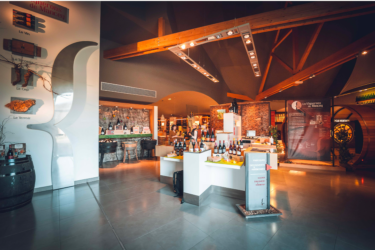
Les Vignerons de Mancey (the winemakers of Mancey) is a cooperative in the broader region of Burgundy (Bourgogne) and specifically the Mâconnais. Founded in 1929, it is dedicated to promoting its members’ terroirs and famous Burgundy grape varieties: Chardonnay, Pinot Noir, Aligoté, and Gamay. More than 80% of Burgundy wines are produced from two grapes – Pinot Noir for reds and Chardonnay for whites – but their Gamay and Aligoté are also worth a portion of your wine budget. The production of each of these wines must follow the very specific methods and specifications that govern Burgundy AOCs. It’s all about the wine law.
The cooperative feels their small size is their strength, allowing them to create mini cuvees that express the uniqueness of their members. Instead of pooling the fruit into one large production run, the winery crafts individualized bottlings that express… well, they say it best:
“Our job is to highlight the individual terroirs and skills of our members. It is a work of art that could be compared to haute couture.“
11. Fouet Buvons des Fruits Cabernet Franc, Loire Valley (Natural) $26
The Wine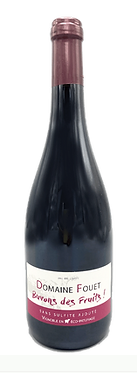
- Organic farming
- No-till
- Use of sheep for weed management
- Natural yeast fermentation
- Carbonic maceration used to add some high-tones to the fruit notes, then stopped after six days
- No fining or filtration
- Unsulfured! (‘sans soufre’)
“to describe this wine as ‘delicious’ is to understate the indecently beguiling beauty of its varietal character.“
 The Name – “Let us drink Fruits” is the virtual translation of ‘Buvons des Fruits’. And once we saw the name and tasted the wine, we agreed it was an apt way to describe this glug-worthy wine – another top pick for the Thanksgiving table. After the U.S. market’s rapturous reception of his inaugural vintage in 2017 of this natty wine, and the rapid depletion of its modest inventory, the annual allocation for the US market has grown with each passing vintage. But the wise lover of Natural wines would not hesitate to bring in a case or two.
The Name – “Let us drink Fruits” is the virtual translation of ‘Buvons des Fruits’. And once we saw the name and tasted the wine, we agreed it was an apt way to describe this glug-worthy wine – another top pick for the Thanksgiving table. After the U.S. market’s rapturous reception of his inaugural vintage in 2017 of this natty wine, and the rapid depletion of its modest inventory, the annual allocation for the US market has grown with each passing vintage. But the wise lover of Natural wines would not hesitate to bring in a case or two.
The classic pairing is with fresh goat cheeses, though aged goat cheeses with a bit of a runny texture pair well with the slight funkiness that this Natty wine provides. A Comte and other Alpine cheeses would work as well.
Drink now through 2025.
The Winery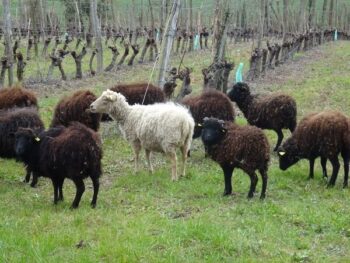
12. Francesco Brigatti Vespolina ‘Maria’, $29
The Wine
This unique wine is made from the little-known Vespolina grape native to Northern Piemonte. It combines bright red fruit notes with clear herb-and-spice accents. This isn’t by chance – Vespolina is naturally rich in ‘rotundone‘, an aromatic component of some herbs such as Marjoram and also black pepper! The wine exhibits fine tannins and fresh acidity to complement its juicy fruit notes (not to be confused with Juicyfruit gum, which would not be a good thing to find in your wine).
Again, this wine is an ideal companion to invite to your Thanksgiving table.
Vespolina has been described as ‘one of Italy’s best native grape varieties’. But until just recently it was blended into wines made from Nebbiolo. Today, the quality and distinctive character of the best varietal bottlings have encouraged more producers to produce varietal bottlings, despite the grape being difficult to grow.
Brigatti’s Vespolina was planted in the 1980s in acidic soil of morainic origin. These 40+ year-old vines are picked in September and fermented in stainless steel without ever being introduced to wood, a choice made to preserve the wine’s natural freshness. After fermentation the wine spends another week in contact with the skins. The wine is then aged in stainless steel for about six months before bottling.
The Winery
Francesco Brigatti is an exemplary small wine grower in northern Piedmont not far from the southern end of scenic Lake Maggiore. Of course, he makes small amounts of elegant, expressive wines based on the classic Piemontese variety, Nebbiolo. But he also makes delicious varietal bottlings such as this one, from the Vespolina grape. These indigenous red varieties (Uva Rara and Vespolina) are normally blended with Nebbiolo.
The climate is somewhat cooler here in Alto Piemonte than in the better-known Langhe region, with breezes from Monte Rosa (literally, Red Mountain) to the north giving excellent day/night temperature variation. And as always, the unique soils of Alto Piemonte add to the uniqueness of these wines – for the geology geeks, they are ‘acidic morainic clays’ rather than the ‘alkaline calcareous clays’ of the Langa.
Francesco Brigatti: I am the third generation on our farm. I graduated with a degree in agronomy from the University of Turin. For the first few years after graduating, I worked at the university doing clonal selection of grapevines. But when my new boss moved me from the field to a desk job behind a computer, I left the university to dedicate myself to our family estate.
Today I farm a little more than 15 acres, and I use the Integrated Pest Management farming method (owls, sheep, geese…). Our soils are very acidic (pH around 5-5.5) and very rich in potassium and magnesium. What does this mean to the wine drinker? Just know that the soils of this region favor wines with a highly valued savory/earthy character we think you’ll enjoy.’


